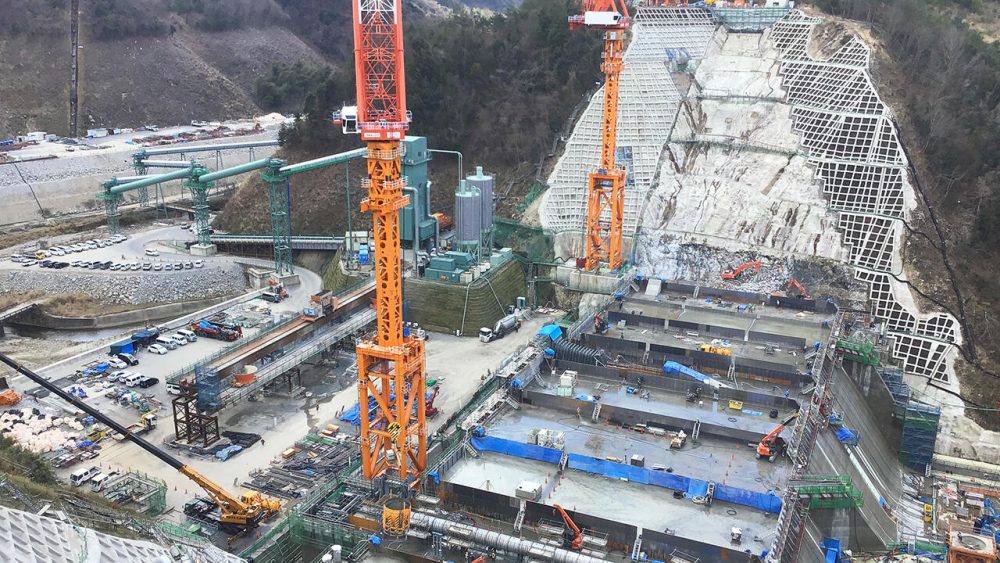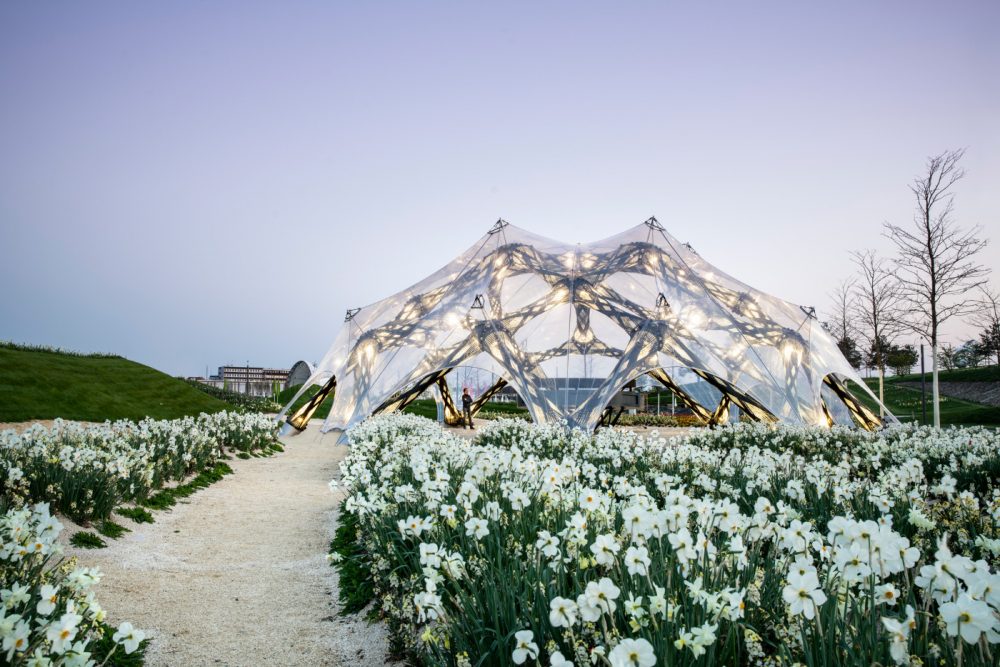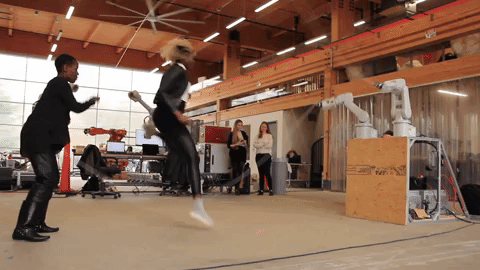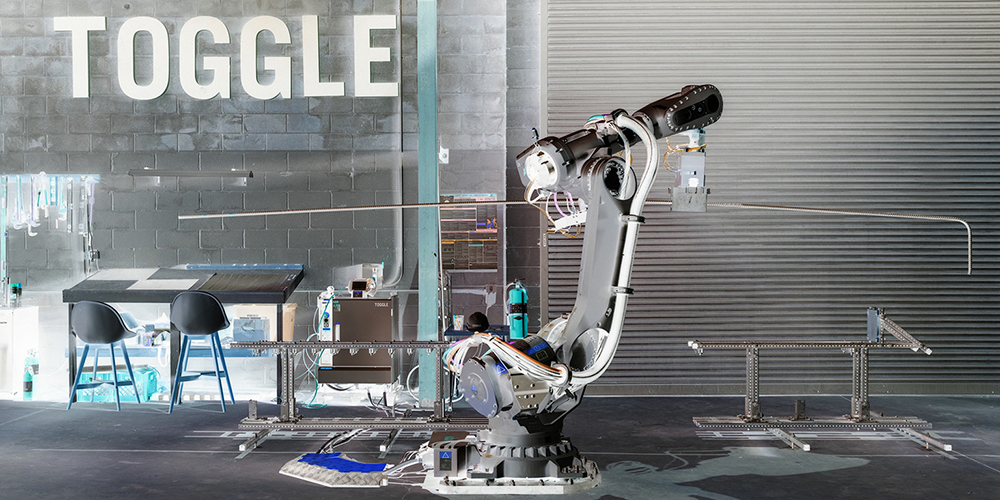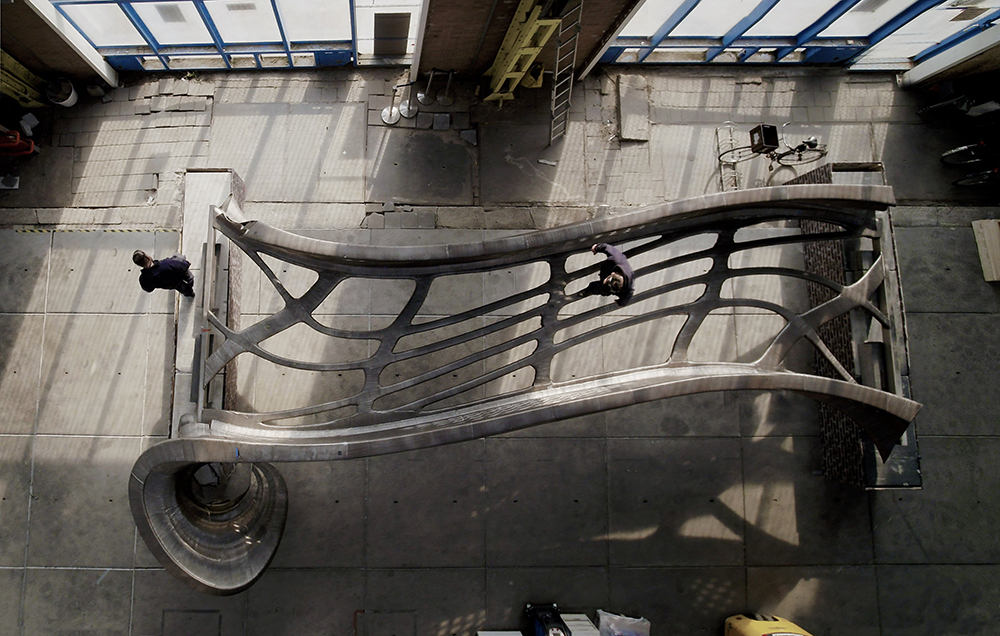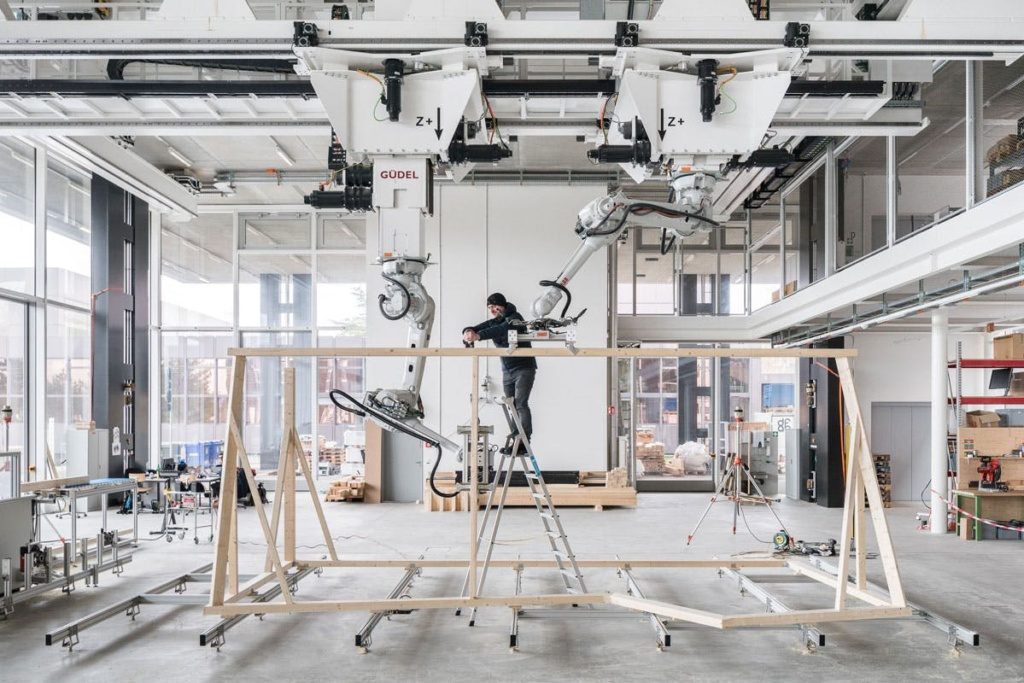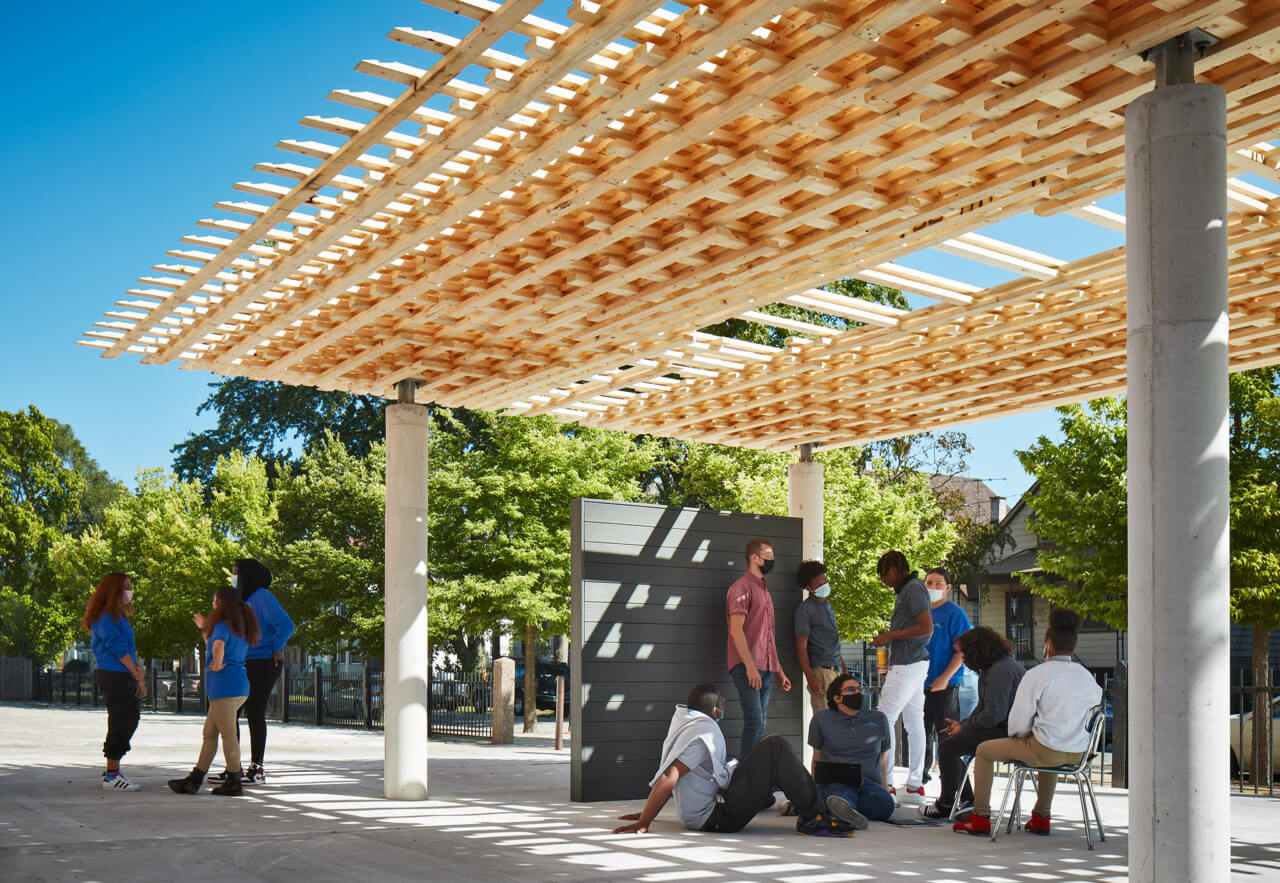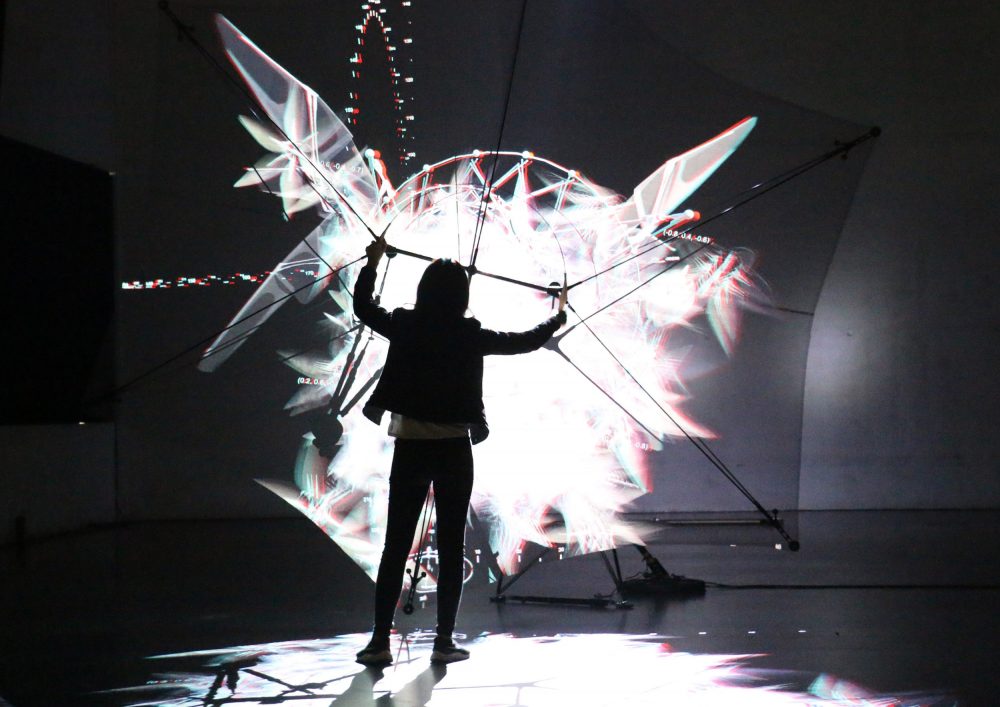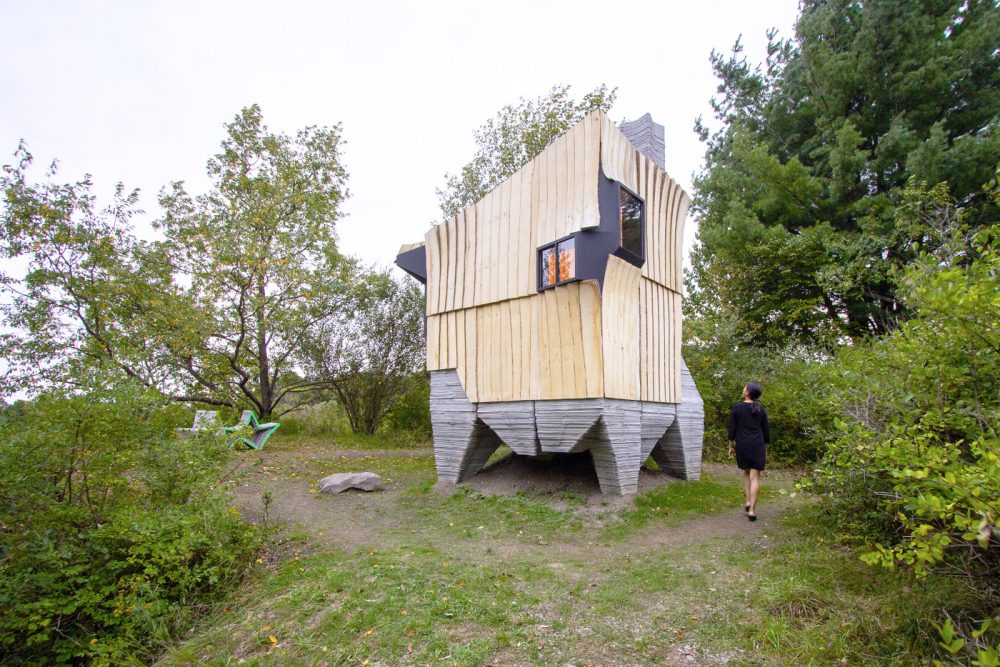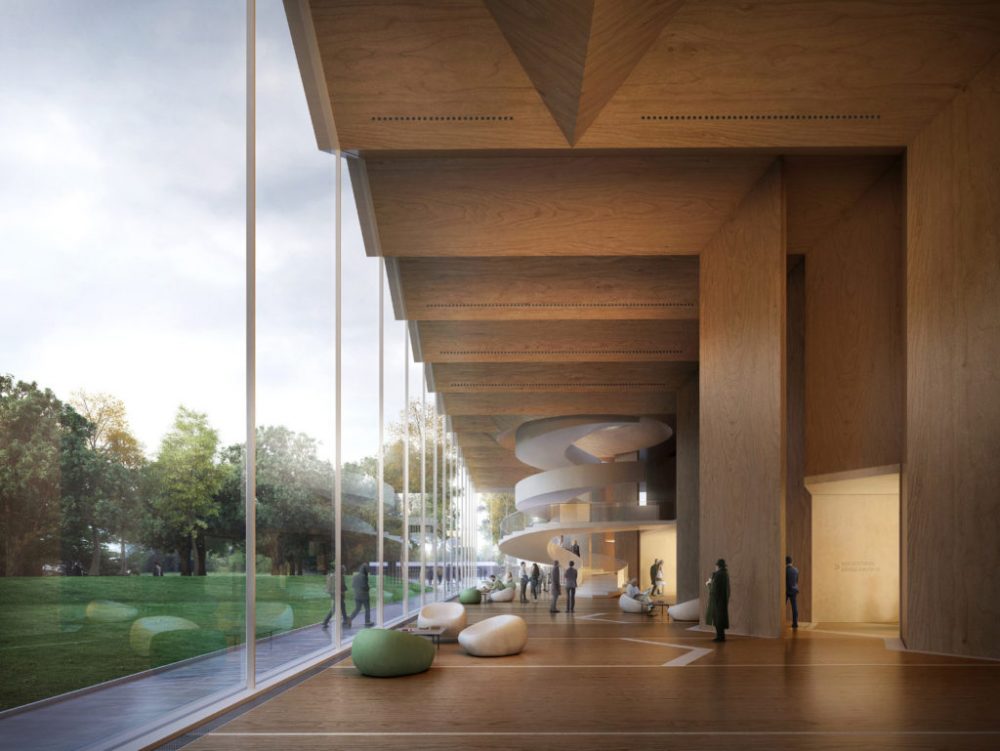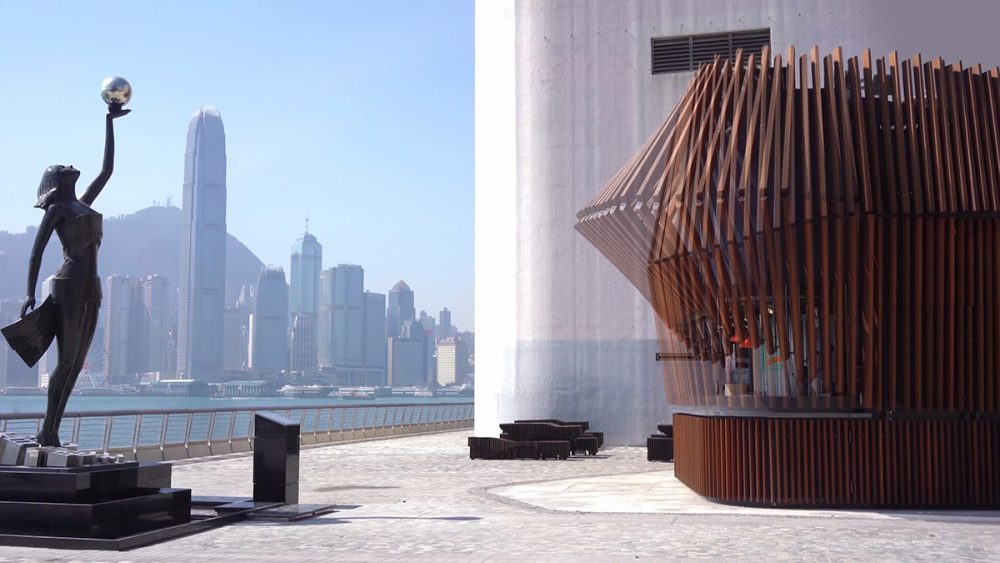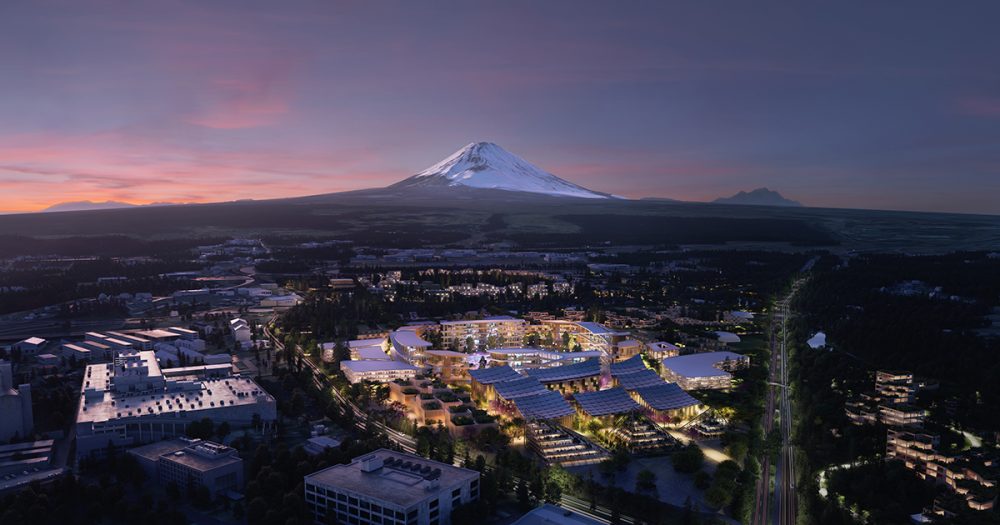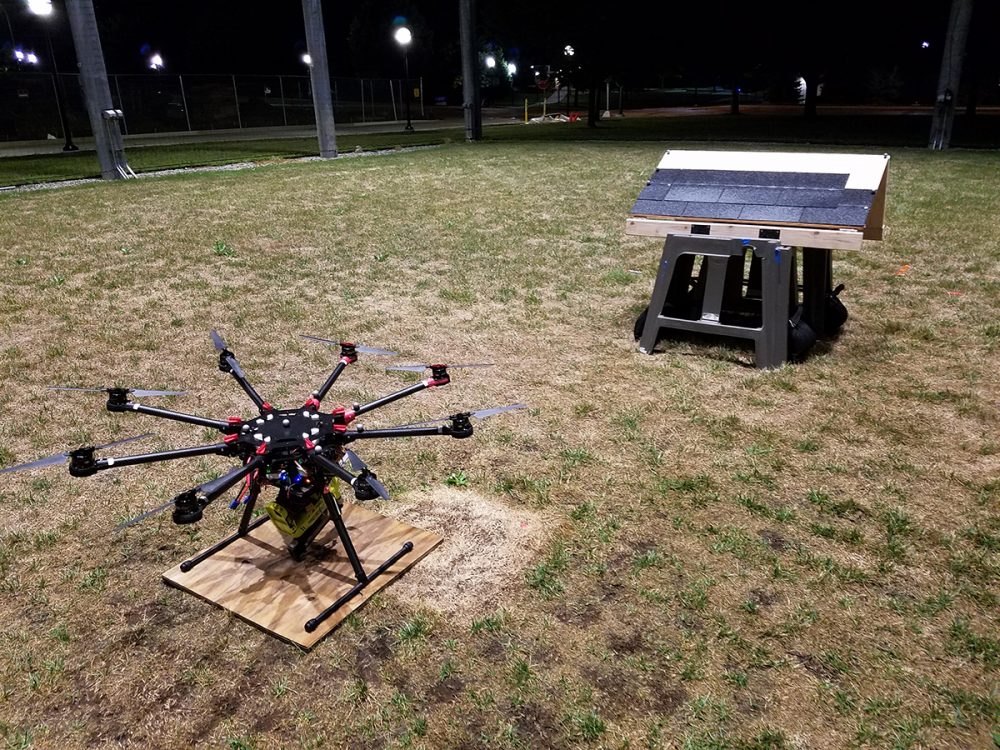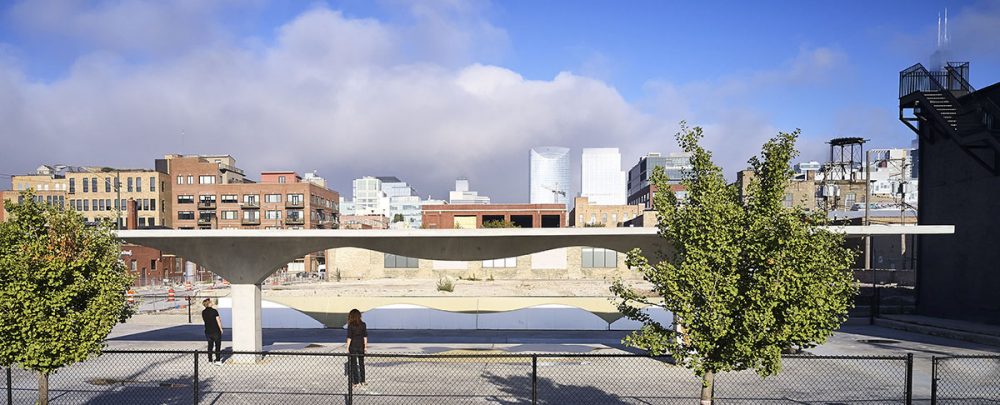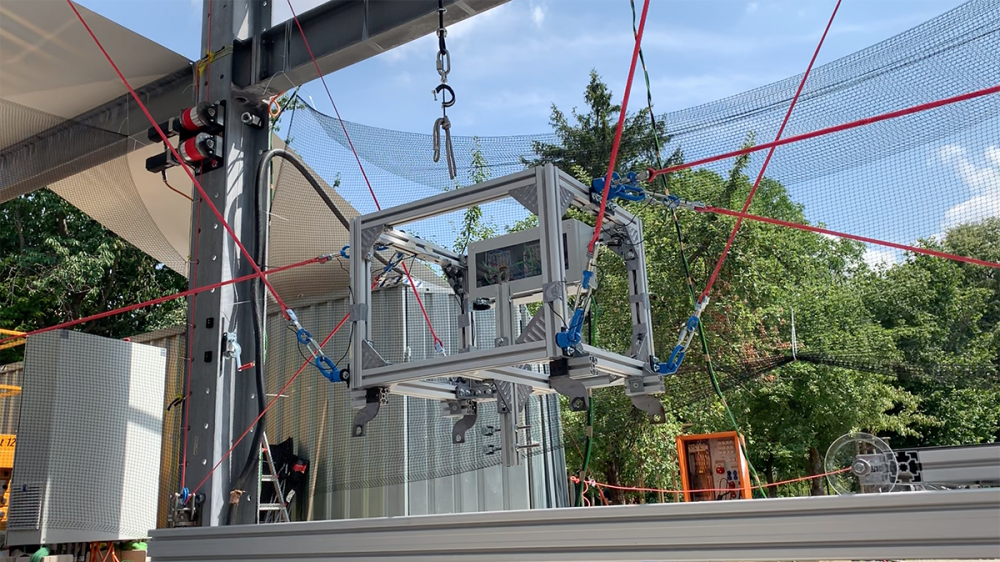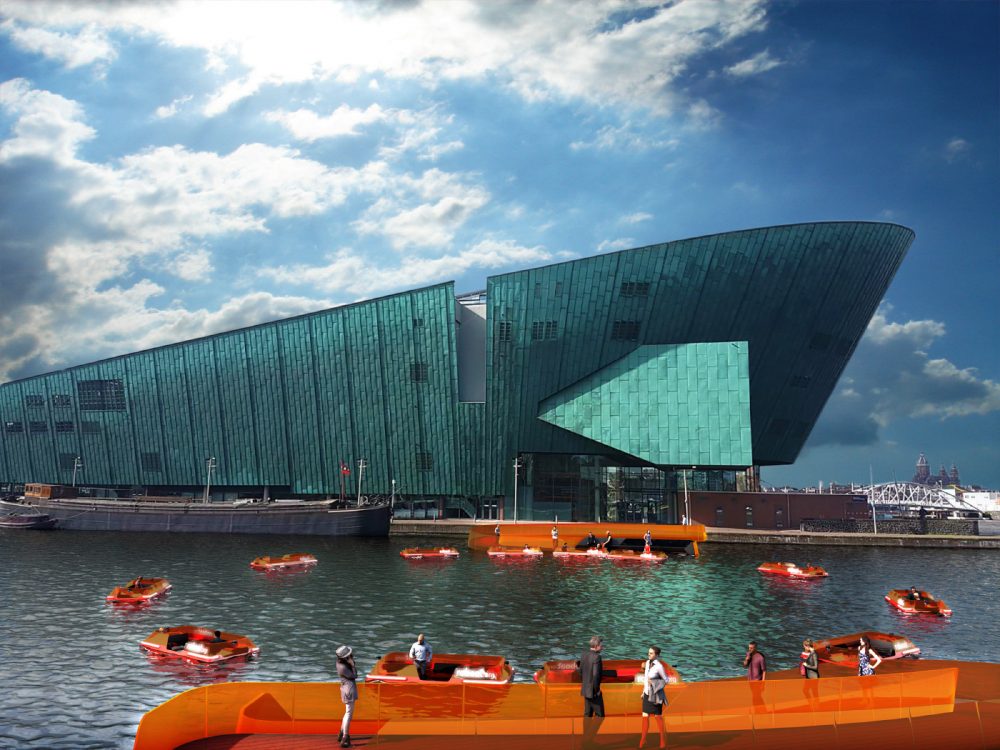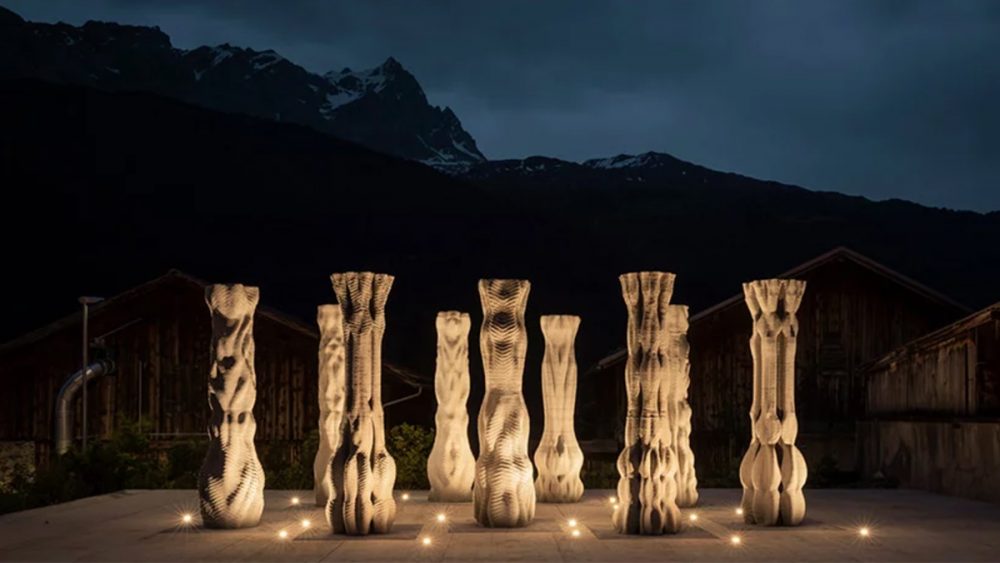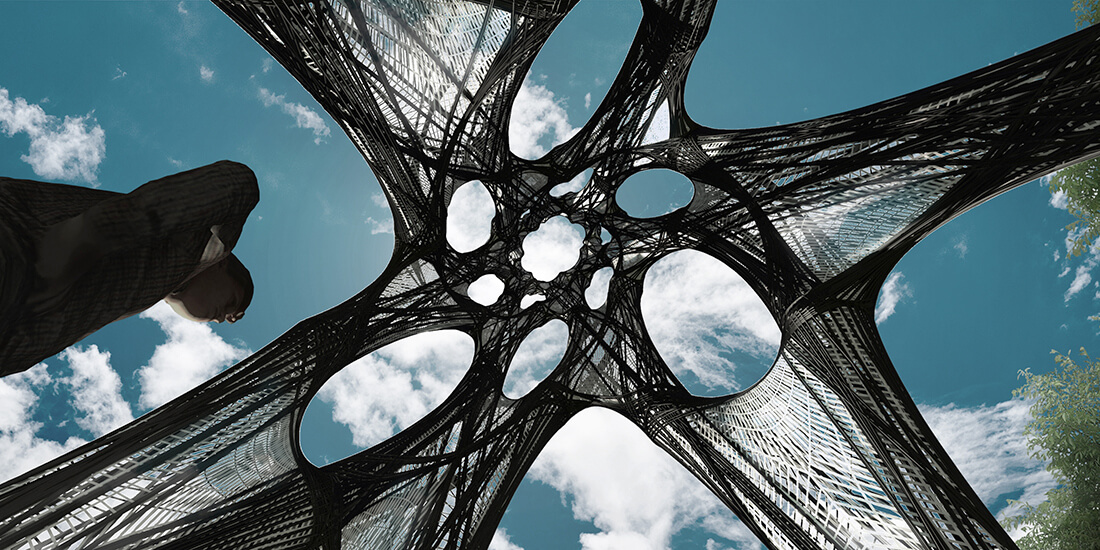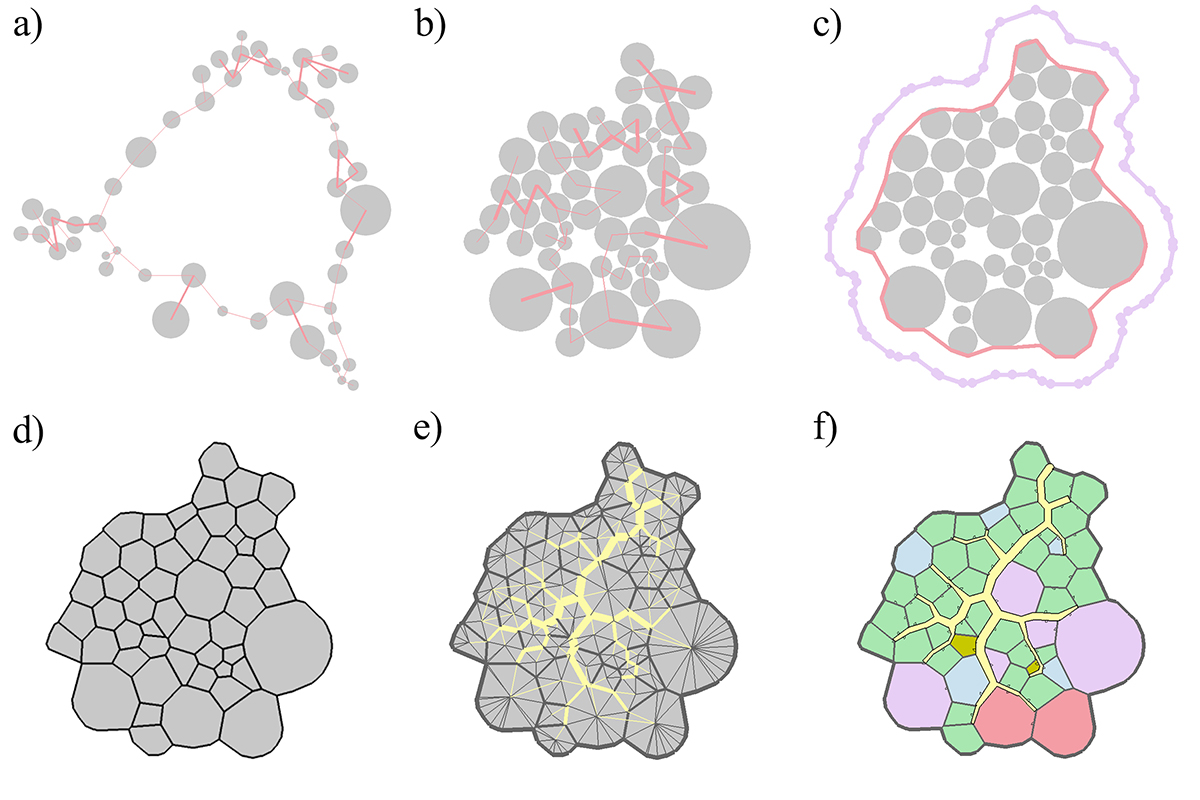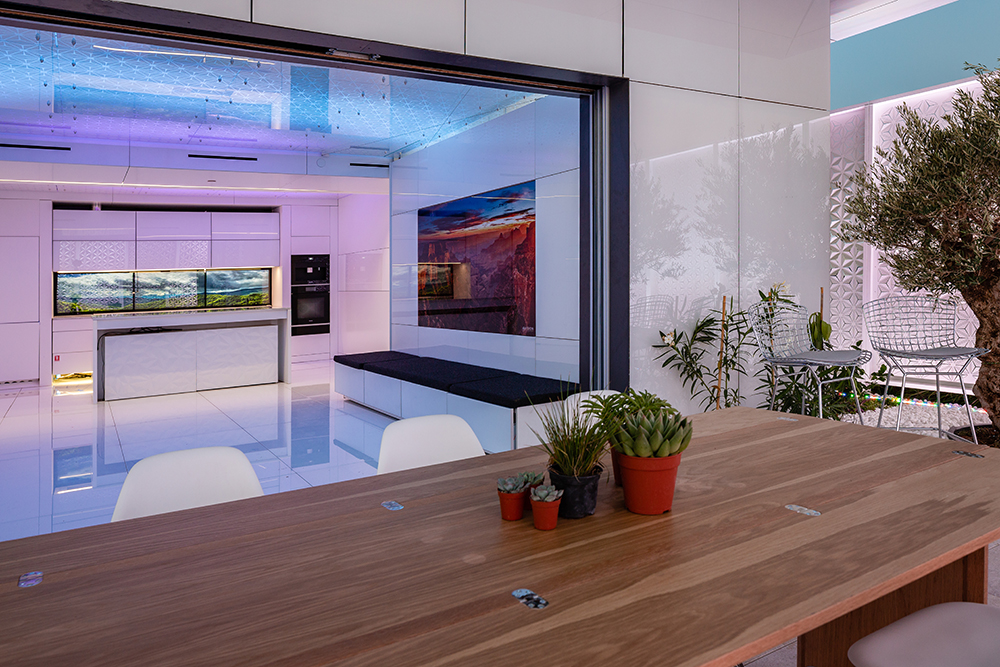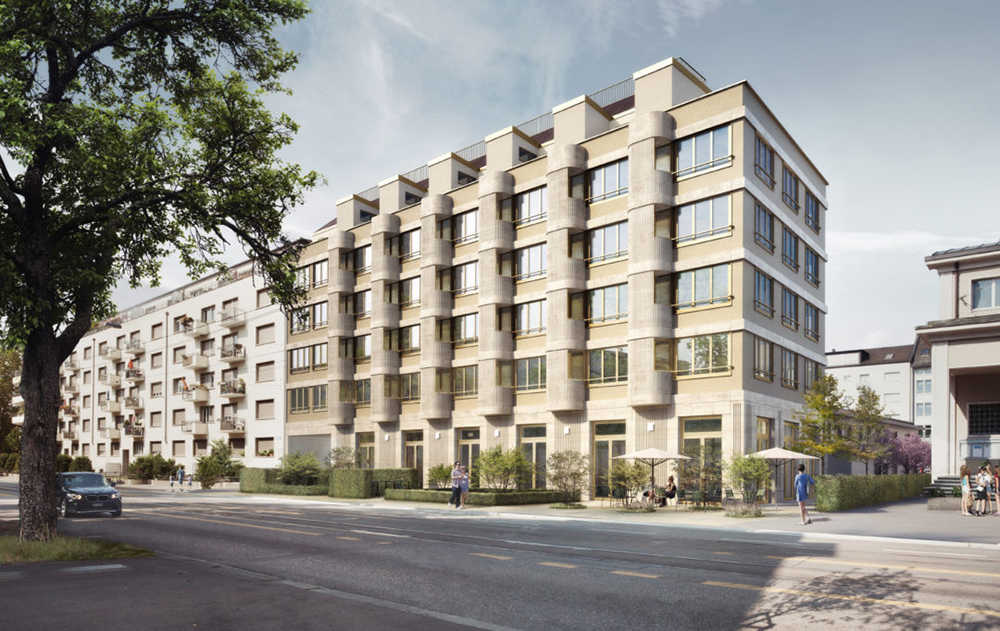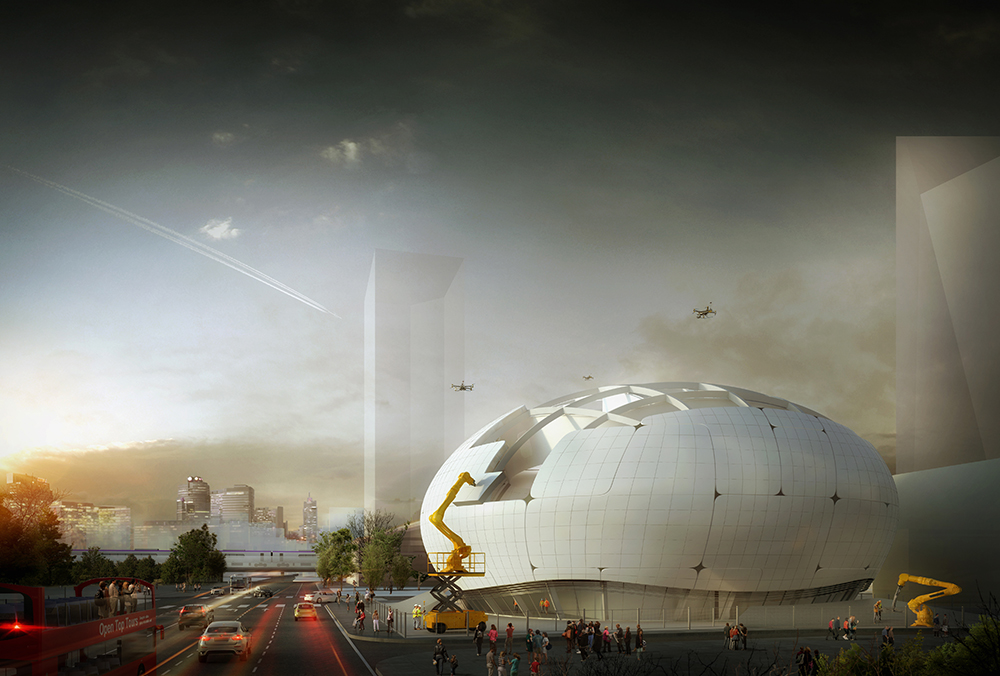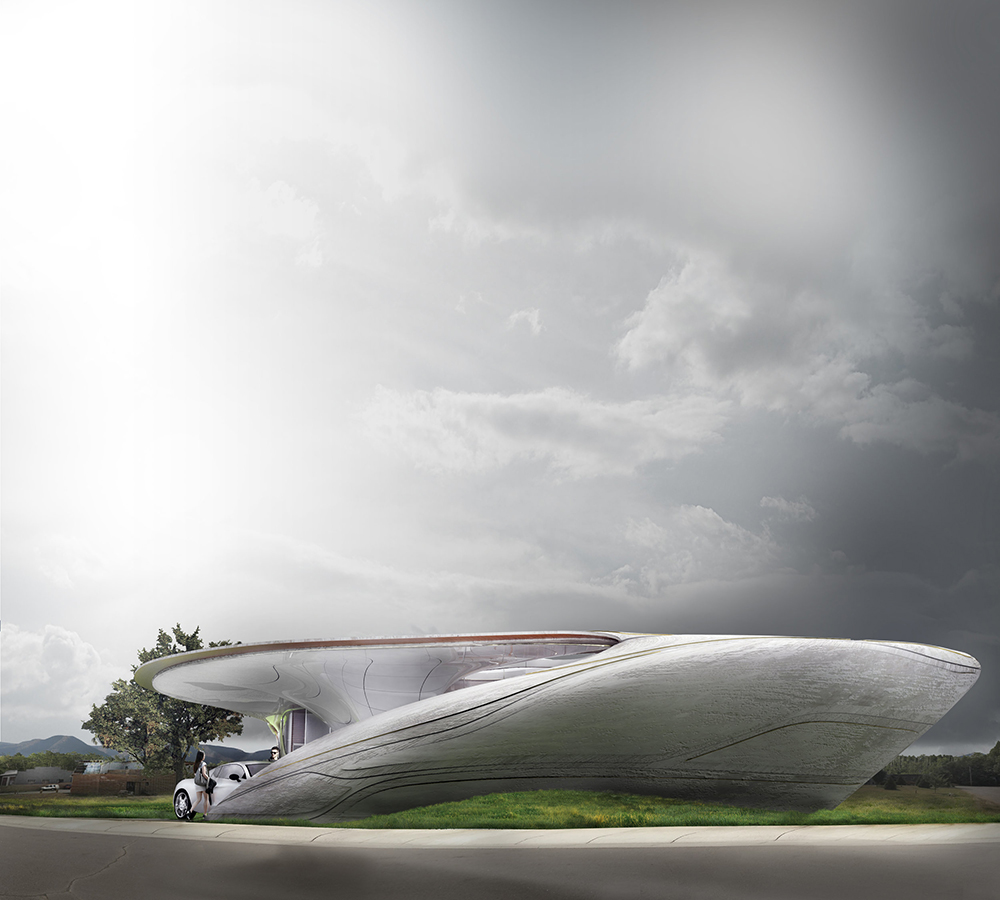Copenhagen-headquartered architectural practice 3XN has revealed its competition-winning design for a campus that will serve as the future home of two leading industrial robotics firms: Universal Robots (UR) and Mobile Industrial Robots (MiR). The roughly 215,000-square-foot space, located in Denmark’s third-largest city, Odense, appears from the design renderings to be more or less a standard,
Japan is facing a labor shortage: As the country continues to age, with 35 percent of the workforce is over 55, the construction industry is looking towards new ways to fill its widening labor gap (Japan has been relaxing its notoriously strict immigration policy towards lesser-skilled workers, but very slowly). One of those solutions is
Installed on the grounds of the 2019 Bundesgartenschau (BUGA) biennial horticulture show in Heilbronn, Germany, the BUGA Fibre Pavilion is a the product of years of research in biomimicry at the University of Stuttgart’s Institute for Computational Design and Construction (ICD) and the Institute for Building Structures and Structural Design (ITKE). Biomimetic design aims to produce
“Movement was always an underlying instigator to how I look at form,” explains architect Amina Blacksher, who began ballet at age six. Her work crosses boundaries and unifies seemingly disparate practices, as she now, among many other things, uses the tools and methods of an architect to investigate the place of robots in our lives
Two Brooklyn-based construction entrepreneurs began their business with a simple observation: steel rebar, used in concrete construction throughout the world, isn’t always easy to work with. Ian Cohen and Daniel Blank noticed this when they were watching wind turbines being erected. “Watching the process of people manually moving these huge, heavy objects looked dangerous and
ETH Zürich’s high-tech showhome opened its doors this past week. The three-story DFAB HOUSE has been built on the NEST modular building platform, an Empa– and Eawag–led site of cutting-edge research and experimentation in architecture, engineering, and construction located in Dübendorf, Switzerland. The 2,150-square-foot house, a collaboration with university researchers and industry leaders, is designed
Amsterdam-based firm MX3D has completed the full span of its 3-D-printed stainless steel bridge, designed by Joris Laarman Lab, a multidisciplinary team located in the Netherlands. The bridge will cross one of the city’s oldest canals, the Oudezijds Achterburgwal, and is approximately forty feet in length and over twenty feet wide. Often using digital fabrication and
Researchers at the Swiss Federal Institute of Technology (ETH) in Zurich, Switzerland, are giving timber construction a mechanical leg up with the introduction of prefabricated, robotically-assembled timber frame housing. Together with Erne AG Holzbau, a contracting firm that specializes in timber, researchers at the institute’s Chair of Architecture and Digital Fabrication have developed Spatial Timber Assemblies, a system for digitally fabricating and constructing
James Coleman currently acts as Vice President of Innovation at A. Zahner Company, a company that specializes in computational fabrication and mass customization at an architectural scale. He is involved in the production of 100,000s of unique parts for large-scale projects as a digital design and manufacturing specialist. James holds master’s degrees in both architecture
In addition to the core exhibitions and dozen-plus commissioned architectural interventions now on view and activated at predominately city-owned vacant lots during the 2021 Chicago Architecture Biennial, over 100 civic, educational, and cultural partners have launched a range of events—exhibitions, installations, lectures, tours, and more—to coincide with the central festival programming. Among these complementary festival
Over the last few years, the Los Angeles area has seen a great influx of infrastructural and placemaking projects that emphasize the status of the pedestrian within the city, ranging from Frank Gehry’s reenvisioning of the L.A. River to the ongoing construction of Destination Crenshaw. The Arroyo Bridge, which wrapped up construction at the beginning of the pandemic but was only recently
Since 1981, the Association for Computer Aided Design in Architecture, or ACADIA, has held conferences at academic institutions throughout North America, bringing together a network of designers, researchers, and practitioners under a single roof. That wasn’t an option for ACADIA 2020—the 40th conference in the series—and the reality of social distancing is reflected right in
Deep in the forests of Ithaca, New York, a short drive from the Cornell University campus, lies the newly completed Ashen Cabin, a practical example of how new manufacturing methods can turn what used to be waste into useful materials. The small cabin was built by HANNAH, the small practice headed by Leslie Lok and
Every so often, the field of architecture is presented with what is hailed as the next “miracle building material.” Concrete enabled the expansion of the Roman Empire, steel densified cities to previously unthinkable heights, and plastic reconstituted the architectural interior and the building economy along with it. But it would be reasonable to question why
Hong Kong-based firm LAAB Architects has realized the robotic Harbour Kiosk along the Avenue of the Stars, a stretch of the city designed as a tribute to Hong Kongese cinema, on the Tsim Sha Tsui waterfront. Originally asked to create a 108-square-foot food kiosk, the architects instead opted to combine the kiosk with a nearby
Yesterday at the Consumer Electronics Show in Las Vegas, Toyota and BIG unveiled a new concept for a high-tech “Woven City” to be built at the car maker’s 175-acre former factory site at the foothills of Mount Fuji, in Japan. “In Higashi-Fuji, Japan, we have decided to build a prototype town of the future where
There have been many uses proposed for drones: photography and videography, certainly; package delivery, and aerial 3D mapping. Now, researchers at the University of Michigan have proposed yet another possibility for these scaled-down aircraft—as flying nailguns. While the FAA may have banned people from attaching flamethrowers to their octocopters, U of M researchers say the
For the Chicago Architecture Biennial opening on September 19, SOM debuted a concrete pavilion called Stereoform Slab to showcase the latest in material and manufacturing technology. As much as 60 percent of a building’s carbon footprint can result from the creation of concrete slabs, according to SOM. By developing new fabrication methods and integrating robotic
This summer, to celebrate the centenary of the Bauhaus, the Bauhaus-Universität Weimar in Weimar, Germany, hosted an exhibition called sumaery2019. At the exhibition, the university showcased some of the latest innovations in robotics, displaying a cable-driven robot that 3D printed cementitious material, designed by a team led by professor Jan Willmann, in cooperation with the
A joint team of researchers at the Amsterdam Institute for Advanced Metropolis Solutions (AMS) and the Massachusetts Institute of Technology Senseable City Lab have developed what they’re calling “the world’s first dynamic” bridge. Powered by a fleet of autonomous electric boats, roundAround will connect the Amsterdam City Center with the developing Marineterrein Amsterdam, a partly decommissioned
For the Origen Festival in Riom, Switzerland students in the Masters of Advanced Studies in Architecture and Digital Fabrication program at ETH Zurich, guided by researcher Ana Anton, 3D printed nine unique, computationally-designed columns with a new layered extrusion printing process developed at the university over the past year and a half. ETH students and
Most 3D printers, no matter their size, operate in a pretty similar way: they move along a grid to deposit material, sliding on axes in a fixed manner within a frame. Even those with more flexible arms remain fixed at a point. GXN, the research-focused spinoff of the Danish architecture firm 3XN, is looking to
Since Dutch designer Iris van Herpen opened her eponymous atelier in 2007, the brand has become the face of high-tech fashion. Often the first to embrace new technologies like laser cutting and 3D printing in her fluid and futuristic forms, van Herpen has designed pieces worn by the likes of Solange and Rihanna, and, on the
Exhibit Columbus, the annual celebration of mid-century and contemporary design in Columbus, Indiana, will be showing off new possibilities of materials that unify support and envelope. This August, two of the festival’s six University Design Research Fellows will present this work as part of a brand new fellowship program. Marshall Prado, a professor at the
What if we could “breed” buildings to be more efficient? That’s the provocation by artist, designer, and programmer Joel Simon, who was inspired by the potentials of 3D printing and other emergent digital manufacturing technologies, as well as his background in computer science and biology, to test a system of automated planning. With a series
New housing is coming to Times Square, at least temporarily. The Virginia Tech team of students and faculty behind the FutureHAUS, which won the Solar Decathlon Middle East 2018, a competition supported by the Dubai Electricity and Water Authority and U.S. Department of Energy, will bring a new iteration of its solar-powered home to New
A seemingly simple, six-story apartment complex is going up in Zurich, Switzerland, and is putting to the test a number of new technologies that showcase a more sustainable approach to new construction. The project, Hohlstrasse 100, is designed by Dietrich Schwarz Architekten and is rising next to an existing, two-story commercial space that’s also being renovated
The soon-to-be-built Robot Science Museum in Seoul, South Korea, will be a robotics exhibition itself. The museum, to be designed by Turkish firm Melike Altınışık Architects (MAA), will be built by robots when construction begins next year. In this way, the construction of the building itself will be the museum’s “first exhibition,” according to principal
3-D printing in architecture is growing—literally. Once limited to models and small pieces, the technology has recently been adapted to large-scale projects, like the world’s largest 3-D-printed concrete bridge in Shanghai, a stainless steel bridge in the Netherlands, and walls for U.S. military barracks. An Austin-based company has even begun selling plans for 3-D-printed

